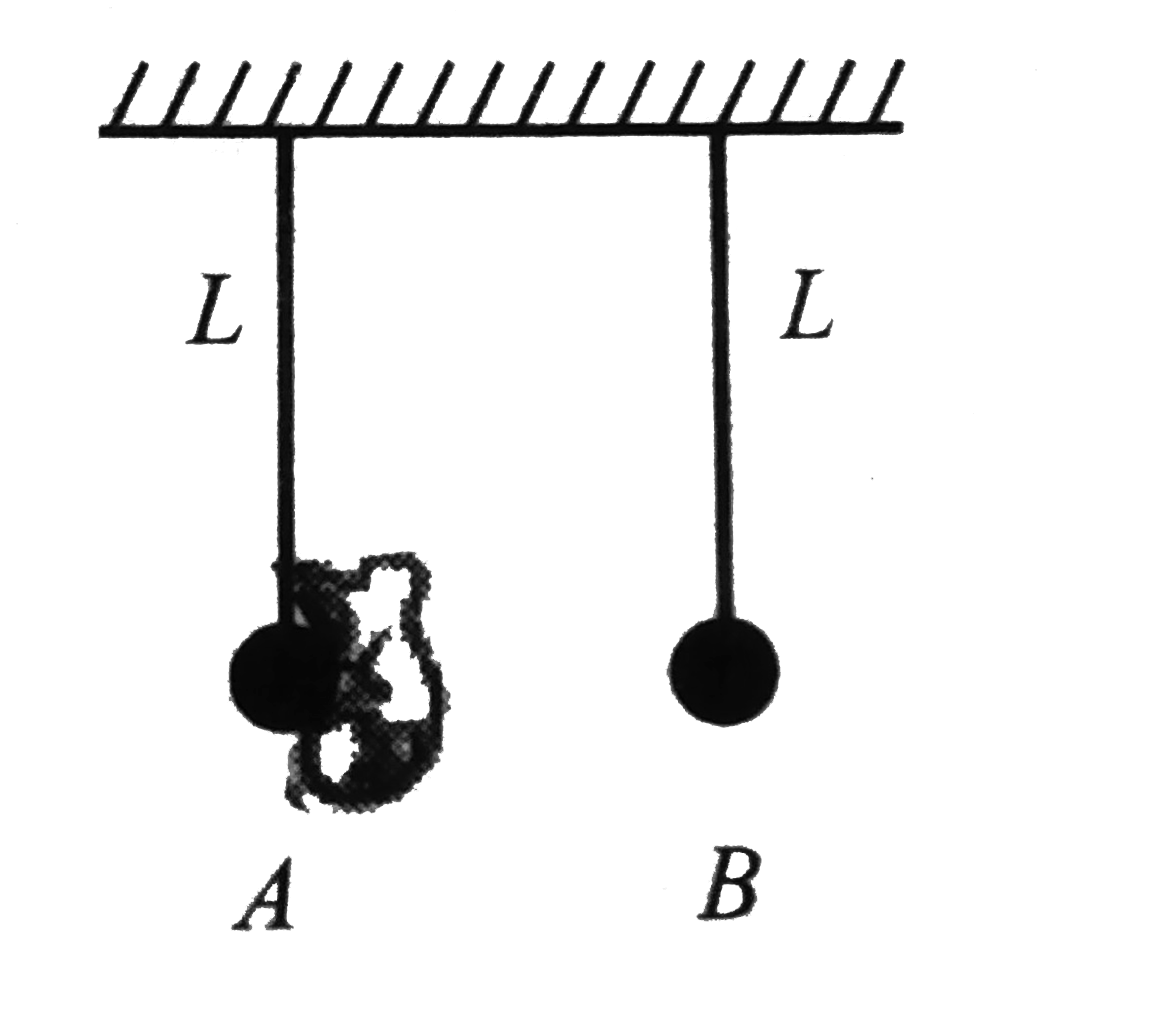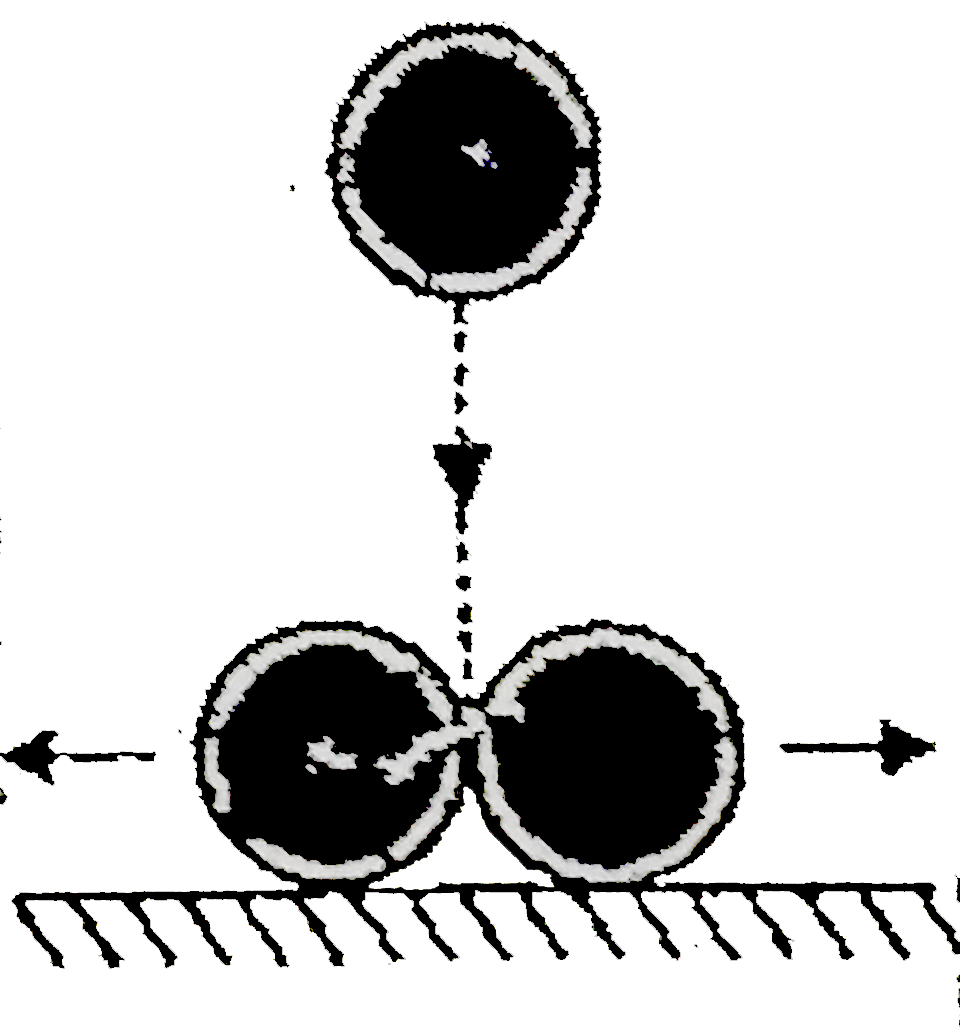The diagram shows the cross-section of eight identical iron balls touching each other on a horizontal surface.

If the volume of a ball is 9π2cm3, then what should be the minimum length and depth of a box so that all the balls can be placed in it ?
Volume of each ball =43πr3
∴43πr3=9π2 (given)
∴r3=278⇒r=32 (taking cube root)
∴ Diameter of each ball = 3 cm
∴ Length AB=8× diameter of ball =8×3=24cm
and depth of box = diameter of ball = 3 cm.
So, minimum length and depth of box should be 24 cm and 3 cm respectively.
Topper's Solved these Questions
- BOOK - NAGEEN PRAKASHANCHAPTER - SURFACE AREA AND VOLUMEEXERCISE - Problems From NCERT/exemplar24videos
SURFACE AREA AND VOLUME
- BOOK - NAGEEN PRAKASHANCHAPTER - SURFACE AREA AND VOLUMEEXERCISE - Exercise 13a30videos
SURFACE AREA AND VOLUME
- BOOK - NAGEEN PRAKASHANCHAPTER - STATISTICSEXERCISE - Revision Exercise10videos
STATISTICS
- BOOK - NAGEEN PRAKASHANCHAPTER - TRIANGLESEXERCISE - Revision Exercise (long Answer Type Question)8videos
TRIANGLES
Similar Questions
The diagram shows the cross section of six identical marbles touching each other on a horizontal surface. If the volume of a marble is 9π2cm3 calculate the length of PQ
View SolutionThree identical balls 1, 2 and 3 are placed together at rest on a smooth horizontal surface. A fourth identical ball moving with velocity u in line of first three balls collides head on elastically as shown in figure, then
 View Solution
View Solution
Knowledge Check
- Question 1 - Select One
Three identical balls each of radius 10 cm and mass 1 kg each are placed touching one another on a horizontal surface. Where is their centre of mass located?
AOn the horizontal surfaceBAt the point of contact of any two spheresCAt the centre of one ballDnone of these - Question 2 - Select One
Three identical metal balls each of radius r are placed touching each other on a horizontal surface such that an equilateral triangle is formed, when the center of three balls are joined. The center of mass of system is located at the
Ahorizontal surfaceBcenter one of the ballsCline joining centers of any two ballsDpoint of intersection of medians - Question 3 - Select One
Three identical metal balls, each of the radius r are placed touching each other on a horizontal surface such that an equilateral triangle is formed when centres of three balls are joined. The centre ofthe mass of the system is located at
Aline joining centres of any two ballsBcentre of one of the ballsChorizontal surfaceDhorizontal surface
Two identical balls each of mass m interconnected by a small light inextensible string are kept on a smooth horizontal surface. One of the balls is pushed towards the other with a speed v0 find the loss of K.E. of the ball. What will be the final velocities of the balls ? (e=1).
 View Solution
View SolutionAn insect jumps from ball A onto ball B, which are suspended from inextensible light strings each of length L=8cm. The mass of each ball and insect is same. What should be the minimum relative velocity (in ms−1) of jump of insect w.r.t. ball A, if both the balls manage to complete the full circle?
 View Solution
View SolutionThe bulk modulus of rubber is 109Nm2 .To what depth a rubber ball be taken in a lake so that its volume is decreased by 0.1% : ?
View SolutionIn the figure shown, the two identical balls of mass M and radius R each, are placed in contact with each other on the frictionless horizontal surface. The third ball of mass M and radius R2' is coming down vertically and has a velocity =υ0 when it simultaneously hits the two balls and itself comes to rest. Then, each of the two bigger balls will move after collision with a speed equal to :
 View Solution
View SolutionSome identical balls are arranged in rows to form an equilateral triangle. The first row consists of one ball, the second row consists of row balls and so on. If 99 more identical balls are added to the total number of balls used in forming the equilateral triangle, then all these balls can be arranged in a square whose each side contains exactly 2 balls less than the number of balls each side of the triangle contains. Then, the number of balls used to form the equilateral triangle is
View Solution

